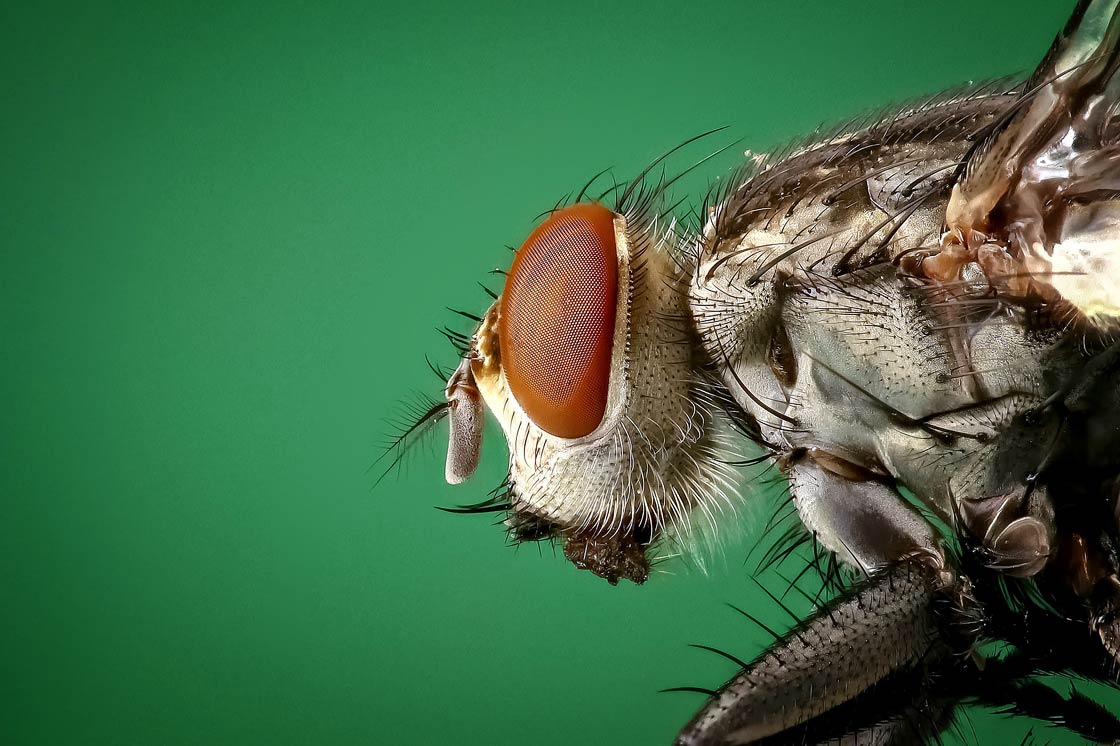The fly and its extraordinary abilities
What can you learn from a fly?
Why is it so hard to catch a fly?
It is early, warm morning. You are lying in bed, dreaming a beautiful dream, when something persistently rouses you with an intrusive buzzing. You would like to sleep more, so you nervously wave your hand to chase the fly away. But it dodges and after a while comes back. And then it comes back again. So you grab the flap lying next to you and try to hit the insolent insect. After a few minutes, you give up, but the fly is still flying around your nose. Angrily you get out of bed thinking, “What a useless little pest!” Surely you have experienced something similar more than once. Therefore, it may surprise you to learn that flies can be useful and that people can learn a lot from them.
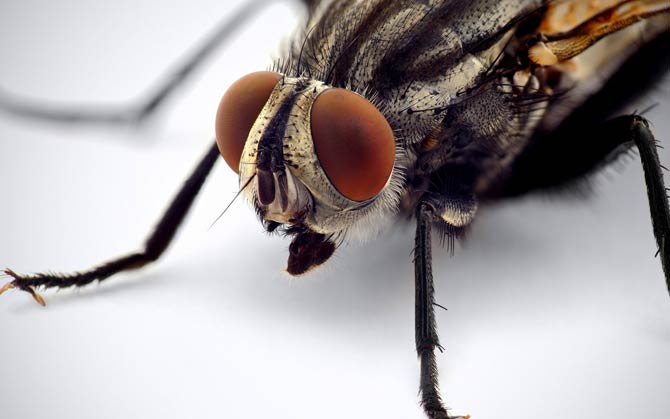
Portrait of a fly
The fly is an insect found all over the world. The most famous and ubiquitous is the housefly. This small insect is just over 7 mm long and lives in natural conditions for about 4 weeks. It reproduces by laying eggs in the faeces (mostly pigs), from which the larvae hatch. The young insect is ready to fly just a few minutes after pupation.
The flies usually fly during the day (they rest at night). Although compared to other insects they are not very fast (they fly about 8 km/h / 5 mph), they can flap their wings up to 200 times per second, and their maneuverability and instant reaction to threats make them difficult to hit or catch.
They are able to escape quickly thanks to an organ called the poiser (halteres) and the unusual structure of a small brain.

A fly’s brain is an extremely fast computer
Little brain, great speed
A fly has a brain the size of a grain of salt, it contains 350,000 neurons (the human brain, by comparison, has 86,000,000,000 neurons). However, it works much faster than the human brain. Upon seeing a threat, this insect can react in just a few thousandths of a second, while humans take about 25 hundredths of a second.
The fly’s quick response is due to some twisted nerve fibers in the brain. They transmit not chemical but electrical impulses, thanks to which the information from the eyes reaches the tiny “command center” instantly and causes an immediate reaction.
Moreover, these insects can perceive even the smallest, fastest movement as if it were displayed in slow motion. Their microscopic brain processes these visual signals at a speed humans can only dream of, and causes the flies to perform unusual acrobatics in flight.
The attacked fly’s reaction follows a certain pattern. When her brain receives information about the danger, the insect lunges violently to the side, simultaneously making a twisting motion. It flies upside down for a moment and then turns the body over again, instantly finding the correct direction of flight. It does this five times faster than when making normal turns without danger. Scientists compare this maneuver to the way fighter pilots react. Like these planes, flies have an instrument that helps them find the right position even in the most complex stunts.
How the fly’s brain can perceive motion with such speed and precision is predicted quite accurately by a mathematical model. Nevertheless, despite more than 50 years of research, it remains a mystery how nerve cells are actually connected in the fly’s brain.
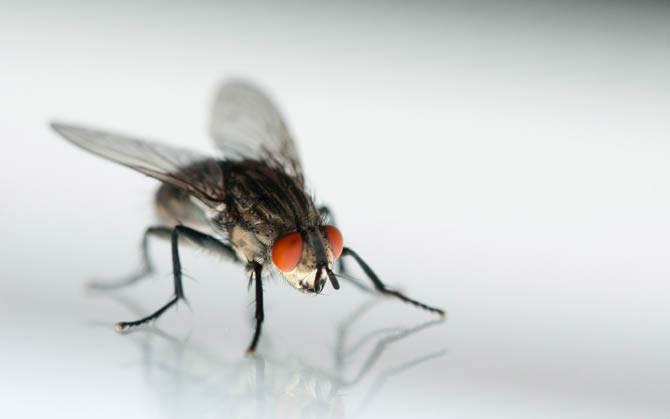
Halteres – the perfect gyroscope for special tasks
Halteres are two small stamens with knobs at their ends, growing from the body of the fly just behind the wings. They look like horizontally aligned pendulums from a clock. These little organs of balance allow the flies to perform amazing acrobatics.
During the flight of the insect, the halteres move up and down, simultaneously with the wings, but in the opposite direction. As the fly tilts, spins, or flies upside down, the haltere spins at its base, putting pressure on the nerve endings that immediately signal the brain to correct its flight path.
In this way, the insect can safely execute its escape maneuver and maintain its course despite gusts of wind.
Halteres are compared to a gyroscope. It is a tool that helps to stabilize the flight of the machine. It consists of a flywheel, which rotates around its axis while maintaining a constant direction in space. This instrument is not affected by external forces such as gravity or magnetic fields.
However, halteres are far superior to rotary gyros because they can convey much more accurate information than man-made devices.
Therefore, scientists are trying to copy the extraordinary abilities of flies into modern technologies.

How scientists use it
Engineers have found the application of the remarkable abilities of the fly’s brain and its stabilizing organ in the design of robots, drones, flying micromechanical insects, airplanes, spacecraft, and computers.
RoboFly
Scientists managed to create a prototype of an artificial fly. This little robot weighs only 60 milligrams and has a wingspan of 3 cm (1.2 in).
To make a robot of such a small size, engineers used lasers and with micrometer precision cut the carbon fibers and then joined them with a polymer glue. The polymers used are an electroactive material that changes shape upon an electrical impulse, which is what works in the brain of a real fly. This method of construction allowed to obtain complex and at the same time flexible parts that can be easily controlled.
However, the artificial fly is not only a toy for scientists. Mechanical flies could be used to find gas leaks from leaking pipes throughout a building, measure the amount of radiation in hazardous environments, detect harmful chemicals and even pollinate flowers and trees. Apparently, there are plans to use robo-flies for espionage purposes as carriers for tiny cameras and microphones.
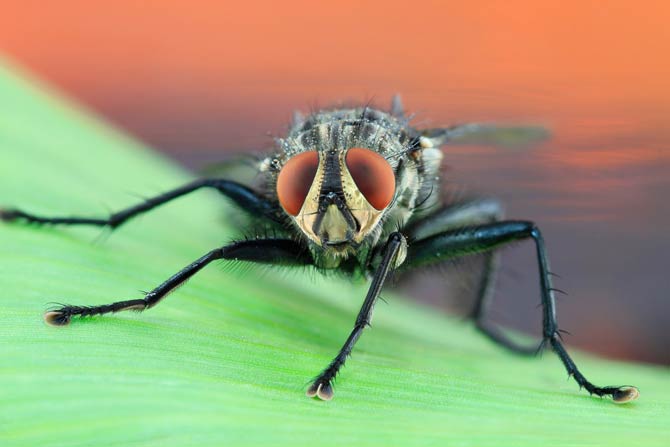
Ultralight mini plane
The researchers also designed a small plane that mimics the fly’s navigational ability, weighing 10 grams and having a wingspan of 36 cm (14.2 in). Their goal was to create a device that could fly in a closed room.
It was decided to use technologies modeled on the eyes, brain and halteres of a fly. Each wing of the plane has two tiny, low-resolution cameras and a micro-chip-sized gyroscope. There is also software on board that allows to process signals from cameras and control the balance.
Although the first flight of the small device did not last long, scientists hope to improve the plane and reduce it to the size of a fly.
Successful testing in confined spaces where a large number of obstacles make it difficult to navigate is the first step in using these mini-planes to search for and rescue people in distress.

Super maneuverable drone
Although drones are not new these days, scientists are still working on improving them.
Inspired by the flight of the fruit fly, the researchers built a drone capable of performing quick maneuvers at high speeds. This device weighs only 29 grams. It is able to turn 90 degrees without losing momentum and turn 180 degrees almost immediately. Interestingly, it also has wings that strike with a frequency of 17 beats per second and their span is 33 cm (13 in). This drone can hover and fly at a speed of 25 km/h (15.5 mph) and perform acrobatics such as rotation or so-called. barrel roll (i.e. rotation around its longitudinal axis).
Although the work on the drone was originally intended to better understand how the flies fly, scientists have concluded that these devices can also be helpful in other areas of life. Their maneuverability and light construction make them safe to maneuver between people and are more effective than other drones.

Airplanes, spaceships and computers
Fly observations continue to drive researchers and engineers to work on further improvements to existing technology. For example, they are interested in designing a vibrating gyroscope that will be more accurate than the ball-bearing gyroscope used so far. It could find application in modern aircraft and spacecraft navigation systems.
Scientists are also thinking about creating a microscopic computer with abilities similar to the brain of a fly. Unfortunately, these plans remain a dream for now.
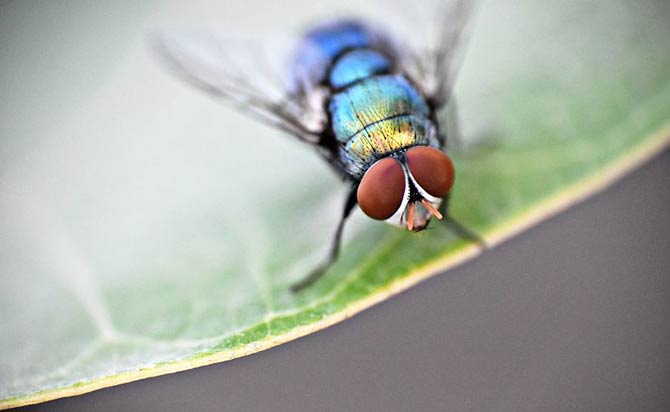
Interesting facts
- It is not only house flies that have halteres. They also have them, among others. bitterns, tsetse, Nematocera and Ensifera insects.
- Flies reproduce very quickly. There are as many born every day as there are people in the world.
- These insects often pose epidemiological threats, because they carry many microorganisms that cause numerous diseases. The tsetse flies inhabiting African countries are particularly troublesome. In the 1980s in Zambia, their herds decimated cattle, hampering the economic development of the region. So scientists invented artificial cows impregnated with insecticide and substances attracting flies. As many as 60,000 of them were deployed (four per square kilometer), which completely eliminated the problem.
- The flies were used as the first animals sent into space to determine whether out-of-planet travel was possible at all.
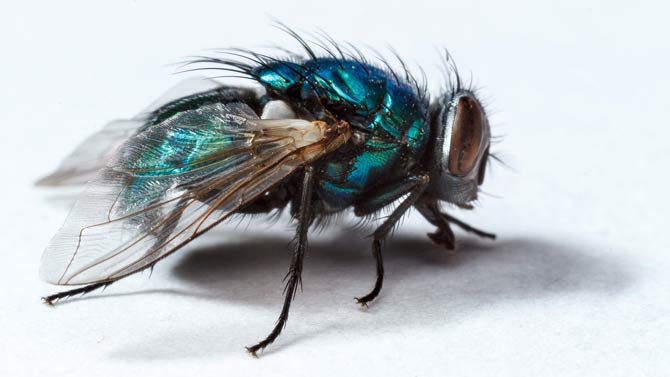
Recommended
- Ants – unusual insects
- Amazing butterfly wings
- Locust anti-collision system
- Fastest animals – Top 100
- Fastest animals – on land, in water and in the air
- Fastest mammals
- Fastest birds
- Most venomous snakes – Top 10
- Largest eagles – Top 10
- Largest birds of prey
- Smartest dogs – Top 10
- Animals records
- Largest crocodiles
- Longest whales
- Heaviest whales
- Longest snakes
- Most venomous snakes
- Largest sharks
- Top-flying birds

